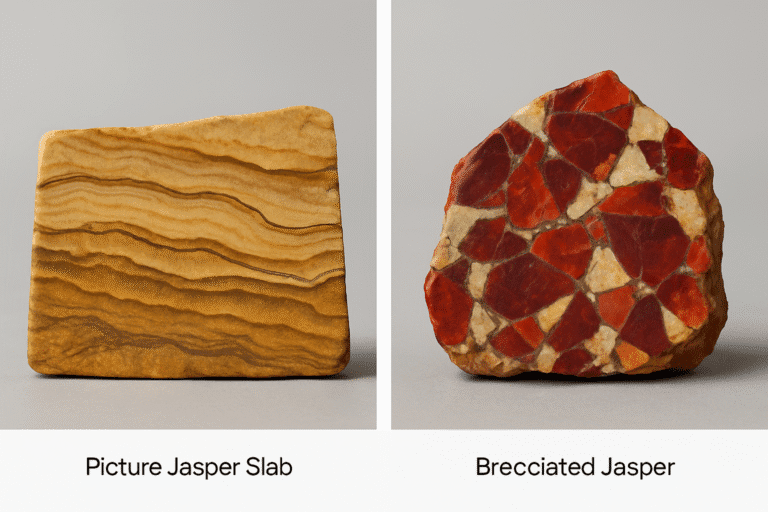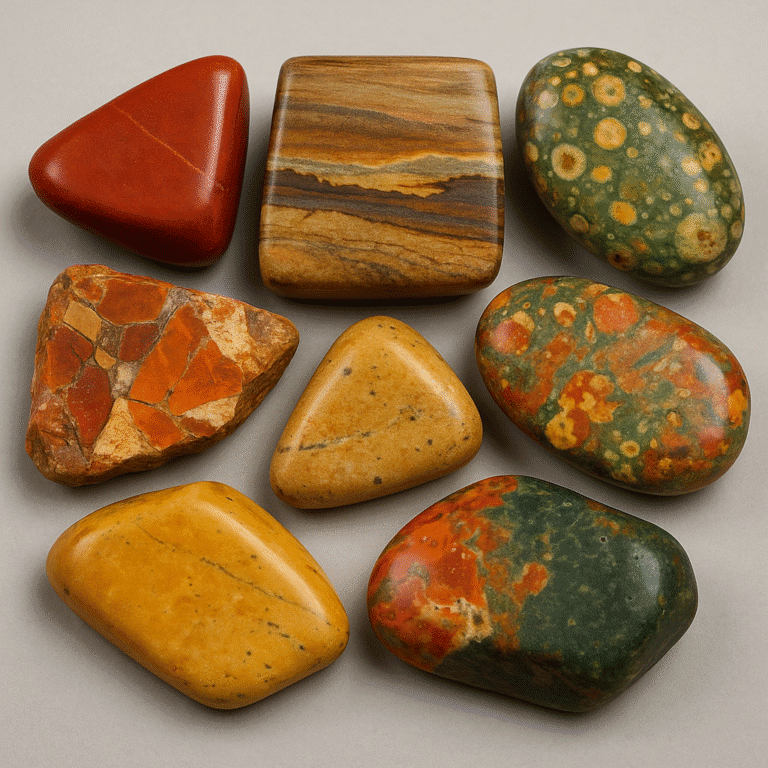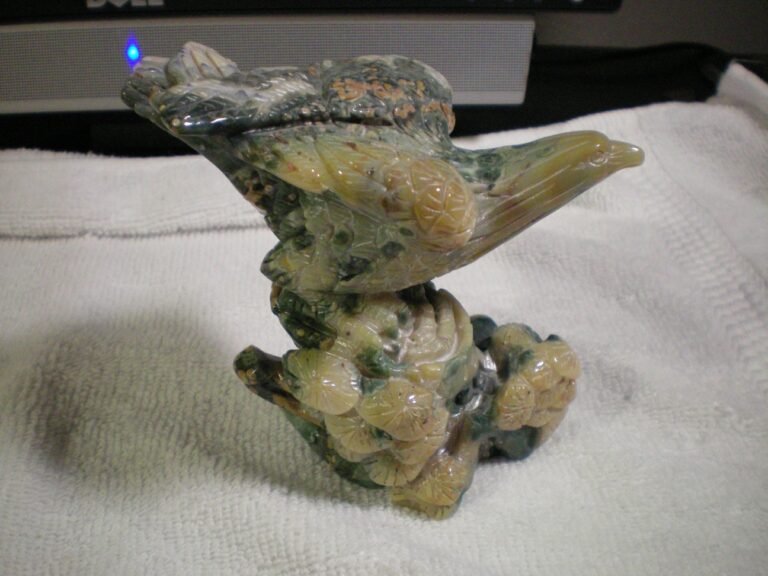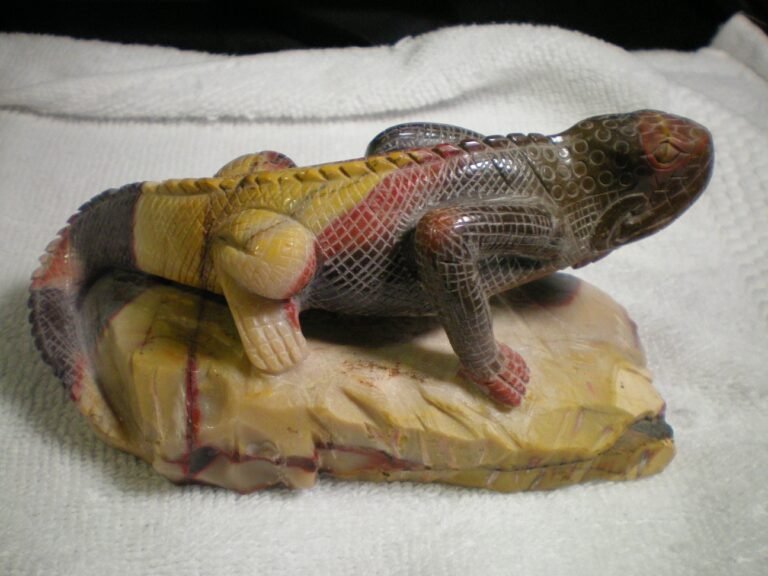Monthly Mineral Spotlight – August
Jasper: Earth’s Painted Stone
Jasper is one of the most diverse and artistically patterned stones a rockhound can collect. Known for its rich colors, scenic bands, and endless variations, jasper is both beginner-friendly and endlessly fascinating. This Spotlight explores what jasper is, how it forms, how to identify it, and why it’s beloved by collectors around the world.
What Is Jasper?
Jasper is an opaque variety of chalcedony — a microcrystalline form of quartz. Its striking colors come from impurities such as iron oxides, manganese, clay, or organic matter. Unlike translucent agate, all jasper is fully opaque, giving it bold contrast and a strong visual presence.
Common jasper colors include red, yellow, brown, orange, green, and mixed patterns.
SEO keywords included naturally: jasper mineral, jasper types, what is jasper, jasper identification, picture jasper.
Quick Identification Guide
Use this checklist to identify jasper in the field:
• Fully opaque (this is the key distinction from agate)
• Hardness 6.5–7 (scratches glass)
• Waxy luster when unpolished
• Conchoidal fracture typical of quartz
• Strong colors caused by iron, clay, or other impurities
• Frequently found near agate, chert, and petrified wood
How Jasper Forms
Jasper forms through silica replacement, where quartz-rich fluids slowly replace volcanic or sedimentary rock. As impurities become trapped in the silica gel, colorful patterns develop.
Jasper forms in:
• Ancient lava flows
• Volcanic ash deposits
• Hydrothermal systems
• Sedimentary layers
• Fault and breccia zones
Its formation makes it an educational window into how silica moves through rock.
Collector-Grade Varieties of Jasper
Picture Jasper
Often resembles painted landscapes with layered dunes, mountains, or trees.
Brecciated Jasper
Angular fragments recemented by silica, creating mosaic-like patterns.
Ocean Jasper
Orbicular patterns in vibrant colors from Madagascar.
Red Jasper
One of the most common forms, produced by iron oxide impurities.
Yellow Jasper
Earthy yellow to mustard tones.
Poppy or Orbicular Jasper
Circular “poppy” or “eye” patterns, common in California.
Mookaite Jasper
Australian jasper with bold reds, yellows, and purples.
Where Jasper Is Found
United States
• Oregon (famous for picture jaspers and Biggs jasper)
• California (poppy and orbicular varieties)
• Arizona and Utah (picture jasper areas)
• Idaho (yellow and red jasper types)
• Nevada (river-rounded jaspers)
Worldwide
• Madagascar (ocean jasper)
• Australia (Mookaite)
• Africa (mixed red and yellow jaspers)
• Brazil (highly polished commercial material)
Rockhounding Tips for Finding Jasper
• Search riverbars and gravels during low water seasons
• Look in volcanic terrain and desert washes
• Spray water on stones to reveal hidden patterns
• After rain, jasper float pops visually
• Jasper is heavier than most surrounding rock — helpful for field sorting
Lapidary Uses
Jasper is prized by lapidary artists because it:
• Cabochons beautifully
• Takes a high polish
• Works well for tumbling
• Cuts cleanly on saws
• Makes excellent inlay material
FAQs About Jasper
Is jasper the same as agate?
No. Jasper is opaque. Agate is translucent.
What is the rarest type of jasper?
High-grade Biggs jasper and Morrisonite jasper are among the most sought-after.
Is jasper a good beginner stone?
Yes — it’s durable, plentiful, and easy to identify.
Conclusion
With endless patterns and colors, jasper is one of the most rewarding stones a rockhound can collect. Its durability also makes it ideal for jewelry and lapidary work. August is the perfect month to celebrate this rugged, beautiful mineral.




